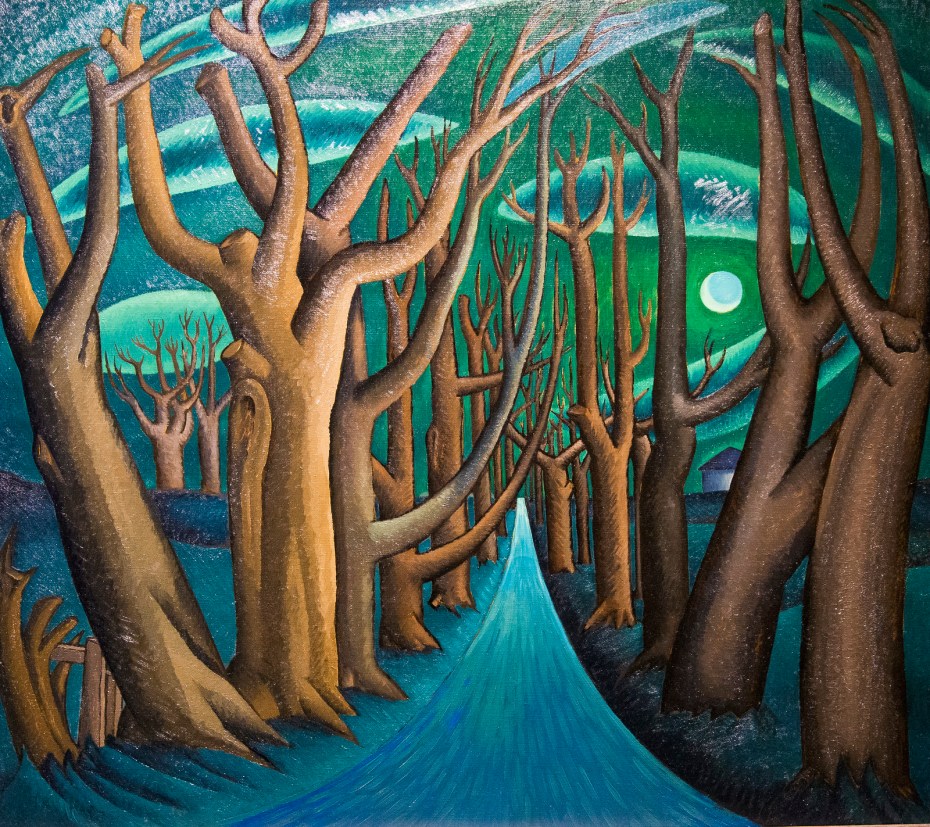
Caven Atkins (1907 – 2000) struggled to find his place in the Canadian art world. Talented and initially successful, Atkins was not able to maintain a working life in the fine arts. In 1945, he took a steady job as an illustrator and designer with the Ford Motor Co. in Michigan for the balance of his career.

Born in London, Ontario, Atkins was raised in Manitoba and Saskatchewan. From 1925 to 1928 he studied at the Winnipeg School of Art, then worked at a commercial art firm, where he met Bertram Brooker and Charles Comfort.
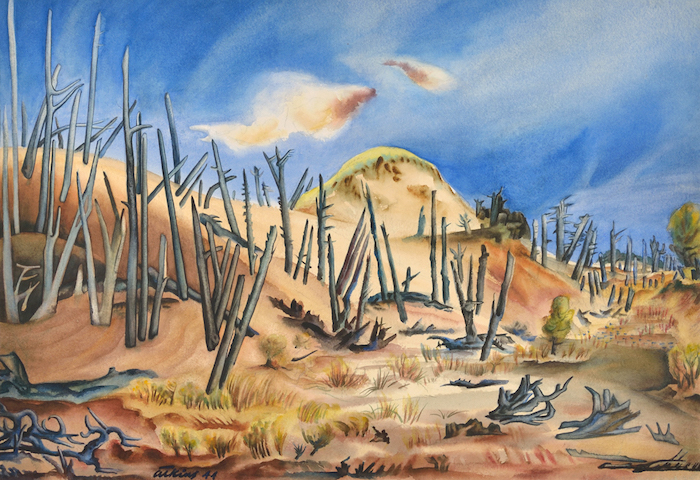
He exhibited with the Canadian Group of Painters and was a member of the Canadian Society of Painters in Water Colour, where he was a former president.
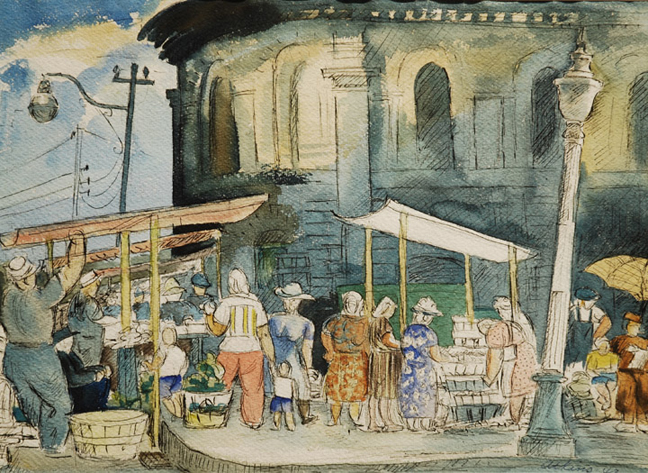
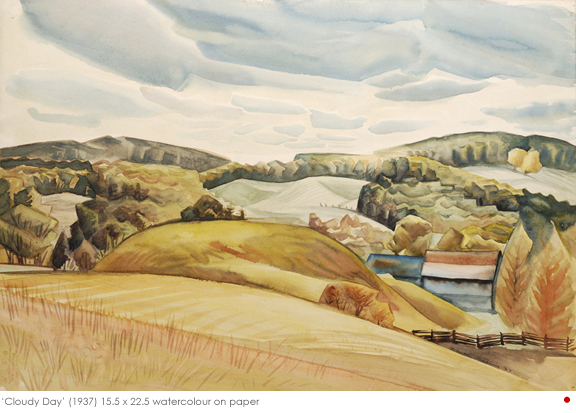

Part of Atkins’ artistic legacy was as a teacher. He taught painting at Queen’s University in 1943 and at the Ontario College of Art in 1945. An authority on painting media he wrote a seminal article for Canadian Art magazine on the cautions to be exercised when using wax, distemper, fresco, egg tempera, oil and watercolours.

At the start of the Second World War, Atkins expected to be recruited as a war artist but instead was commissioned to create a series of paintings and drawings at the Toronto Shipbuilding company (above).
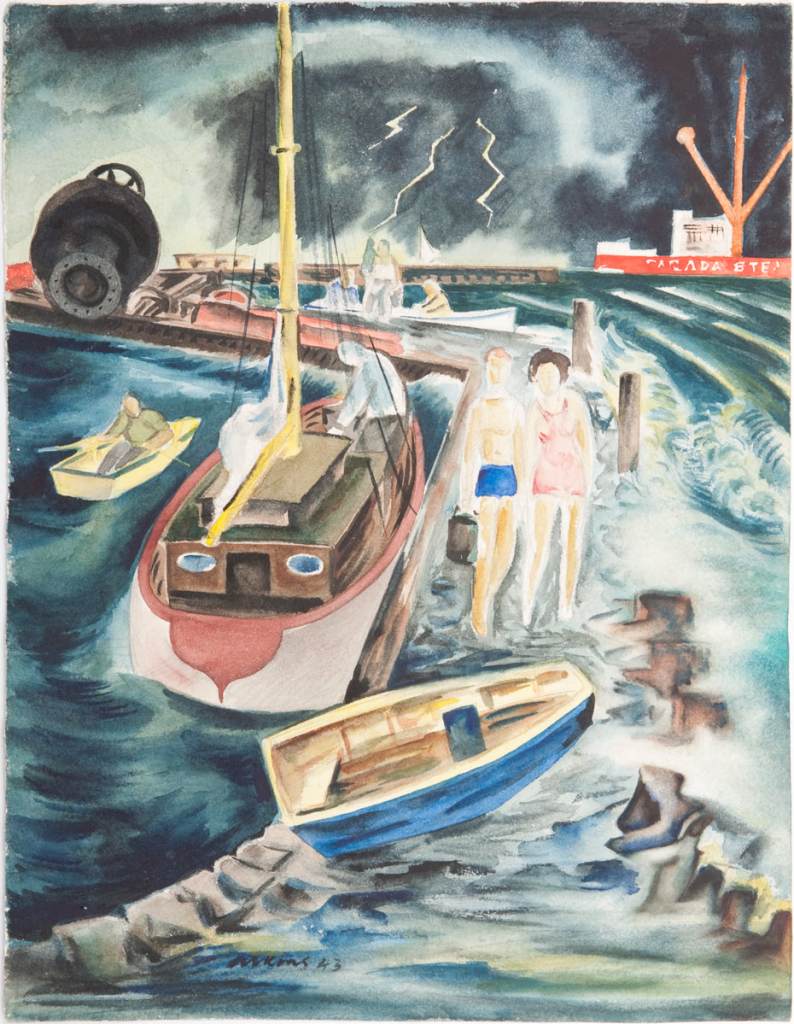
In post-war 1945, Atkins found it hard to find employment. This led him to take the job with Ford in Birmingham, Michigan. He never returned to Canada, and as a result is not well known north of the border, despite making significant contributions to the Canadian War catalogue.
Outfitting a Minesweeper at Night
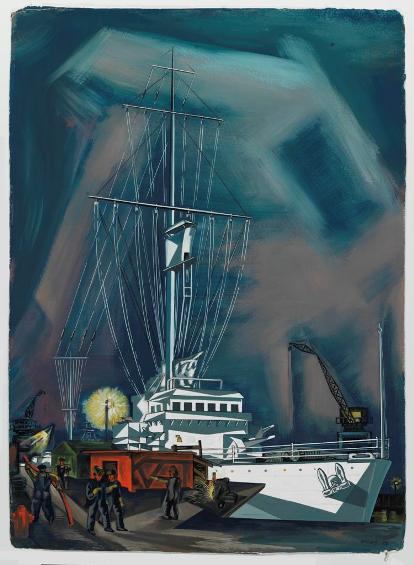
In this dramatic night-time scene , a recently launched minesweeper is being outfitted in a shipyard.
Workers perform a variety of tasks, including welding or cutting metal. Even after a ship was launched, further construction work and installation of armament and equipment was necessary before it could enter service.
In 1942, when Atkins painted this, Canadian shipyards were straining to meet demand for warships, corvettes and minesweepers to serve as convoy escorts.
An extensive collection of Caven Atkins works is at Ingram Gallery, here.

This is No. 59 in 150 Artists, an ongoing series on Canadian artists you should know.
Discover more from Canadian Art Junkie
Subscribe to get the latest posts sent to your email.


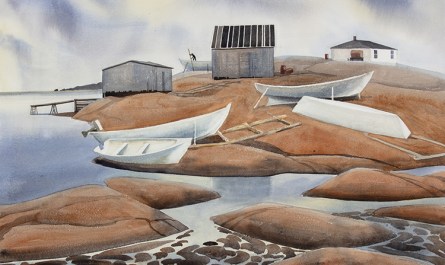
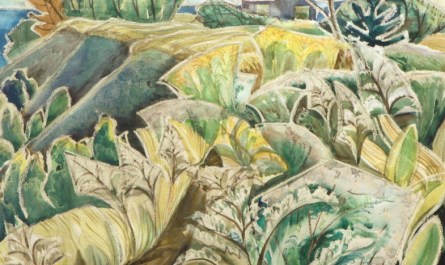


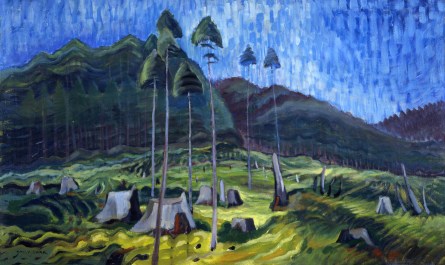
Fascinating!
His work is his own in style and subject matter it seems, even the at the shipyards.
That’s a great point – the variety of his styles. Not a lot of artists of that time changed styles so frequently.
These are cool. I like the “Moonlit Landscape” one, which is weirdly creepy!
Weirdly creepy is a perfect description of that painting. Thank you!
What a great variety of styles. His Derelict Cedar Forest immediately made me think of Nicholas Party’s Arbres. I especially love the effort in the picture of the workers in the shipbuilding factory.
What a great reference, to Nicholas Party. So appreciated, because I had not made that connection. Thank you. (Some great pieces by Party online at the Montreal Museum of Fine Arts https://www.mbam.qc.ca/en/exhibitions/nicolas-party-lheure-mauve/ )
Really interesting. In that first picture of the trees in the forest, my eye saw to the left one of those trees looks like a woman’s body with the head cut off. Not sure if you can see that. Looks like she is kicking her right foot up. That’s what my mind saw at first glance.
One of the best things about art is that every viewer sees it exactly their way!
It’s a shame he didn’t become better known his rnage of topics, technique and media is impressive and interesting. Among artists and artisans it’s curious sometimes to see who strikes sparks and who creates inspiring work but doesn’t garner much attention.
You’re so right about who gets the attention and sparks response. I think his lack of success was in part because so many of the artists around him were literally behemoths of the Canadian art world at the time – including the emerging Group of Seven. Perhaps he was just backwashed by others.
I real like these works. Thank you for share.
Thanks for your comment I.V. I’m with you, love the colours.